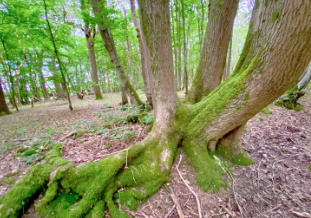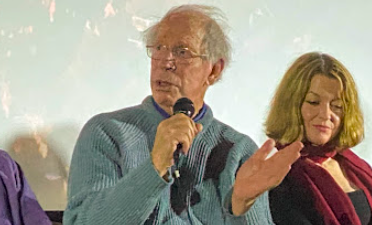If you visit the Ancient Tree Inventory and float over Lewes you will find a lot of trees. Most identified are recognised as 'notable', a few 'veteran' and none 'ancient'.
An 'ancient' tree needs to be old for its species - in the last phase of its life and considerably decayed with lichens, moss and ivy likely, as well as signs of fungi and invertebrates. After the bet part of five months and 300 trees, I found one on a boundary bank between Markstakes Common (an ancient wood) and Starvecrow Wood near South Chailey.

The large root is wrapped around a long-gone trunk, now decayed away. The five stems (one significantly decayed) and the old epicormic shoots that emerged from the trunk as it decayed. This the ancient tree something of a ghost, but the living parts are nonetheless part of its regeneration.
I've had more luck with veteran trees having had a dozen or so verified. These are trees which do not need to be so old but have all the ancient characteristics: hollowing of trunk and branches, dead wood in the crown and on the ground, decay, moss, lichens and signs of invertebrates and fungi.
'Notable' makes up 280 of the trees I've identified and had verified. Depending on the species these can be bold, statement trees, significant in their locale, but in all likelihood mature, strong examples with many seasons left in them.
I've learnt to read trees; I can figure out their story. It's a changing picture.
There's a relevance to learning with the Open University to all of this! I liken it to studying a book. There's an OU 'How to Learn' or 'How to Read' book somewhere which describes the process: you read the book through once to get the gist of it, to become familiar with the 'landscape'; then you read it again, taking notes. On the third read you start to understand the arguments and connections - you see more. It is like this visiting a wood for the first time. I have learnt to go around with now expecations on the first trip. On the second and third trip I start picking out the trees that are significant. Only on the fourth or fifth trip do I raise an eyebrow at some curiosity that somewhere had escaped me until then.
